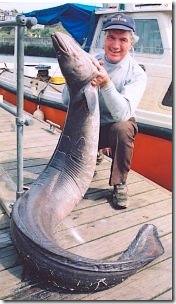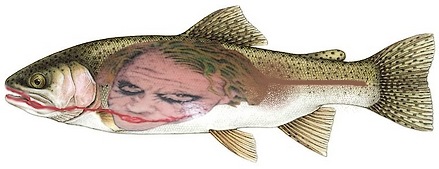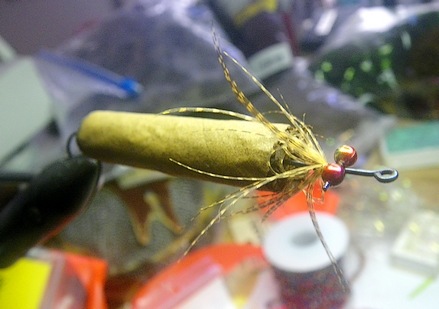 The mystery solved.
The mystery solved.
Why fly fisherman have cropped up hawking everything from credit cards to Snicker bars …
We … is back in style.
Goretex and Redwings rub shoulders with plunging strapless and Italian leather, and all the gals is wishing their man wore Pendleton.
Actual outdoor usage is still tawdry and forbidden, but looking like you can chop wood, mend fence, or stand hipshot with a scowl, sets all them urban hearts aflutter …
“I’ve heard some people saying that the heritage revival is the death of luxury,” said Mr. Bastian, the fashion designer. “But guys are just shopping differently.”
Yet another thing the Brawny Man can aim for: saving the American economy.
 With patriotism a cornerstone of our conservation dogma, it may be time to wrestle the Tea Party away from political hacks, and rechristen it the Bull Moose Too Party. We can backburner silly notions of religion and family values, and focus on important issues like annexing Canada (which still has good fishing), Maine, and sweeping the Senate of folks that don’t love tuna fish.
With patriotism a cornerstone of our conservation dogma, it may be time to wrestle the Tea Party away from political hacks, and rechristen it the Bull Moose Too Party. We can backburner silly notions of religion and family values, and focus on important issues like annexing Canada (which still has good fishing), Maine, and sweeping the Senate of folks that don’t love tuna fish.
A “fashionista tax” where the user must show a valid hunting or fishing license to buy Sorel, Barbour, or Simms, or pays double – should ensure the budget is balanced in a fortnight.
Besides, nobody likes them guys anyways …
As the clothing looks good on the young, us aging Bull Moosers will adore adding additional entitlements for Cyprinids, Salmonids, and the environs they hold dear. Gleeful, knowing that while the young are busy posing fiercely at one another, they’ll be doing so at the expense of a meager pay stub – and the shrinking 401K – we leave them.
Only real difference between us and them other political hacks, is we’ve no plans for “Johnny Nintendo” to inherit a damn thing, what remains of the Greatest Generation and the Boomers will show Junior what selfish looks like …
… right after we kick them out of the house.

 Just a friendly reminder that Monday, September 6th is the second of the
Just a friendly reminder that Monday, September 6th is the second of the  It was only a matter of time,
It was only a matter of time,  The War against Invasives takes a bloody turn this week compliments of weapons that assist the socially responsible angler maintain his squeaky clean.
The War against Invasives takes a bloody turn this week compliments of weapons that assist the socially responsible angler maintain his squeaky clean.

 The Gudebrod thread company appears to be another casualty of recent economic upheaval, with banks unwilling to lend and small businesses caught without capital.
The Gudebrod thread company appears to be another casualty of recent economic upheaval, with banks unwilling to lend and small businesses caught without capital. Another in a long list of reports on Delta water use, the state’s best and brightest suggest that 75% of the rain and snowmelt of the Sacramento and San Joaquin watersheds must flow through the Delta and into San Francisco Bay to maintain ecological equilibrium.
Another in a long list of reports on Delta water use, the state’s best and brightest suggest that 75% of the rain and snowmelt of the Sacramento and San Joaquin watersheds must flow through the Delta and into San Francisco Bay to maintain ecological equilibrium. It’s a stretch to be certain, but rather than assume we’ve taken Matching the Hatch to its logical conclusion; with all the permutations and combinations of insects and imitations well documented, have we overlooked the obvious and forgotten that even the most well trodden path can meander with time?
It’s a stretch to be certain, but rather than assume we’ve taken Matching the Hatch to its logical conclusion; with all the permutations and combinations of insects and imitations well documented, have we overlooked the obvious and forgotten that even the most well trodden path can meander with time?
